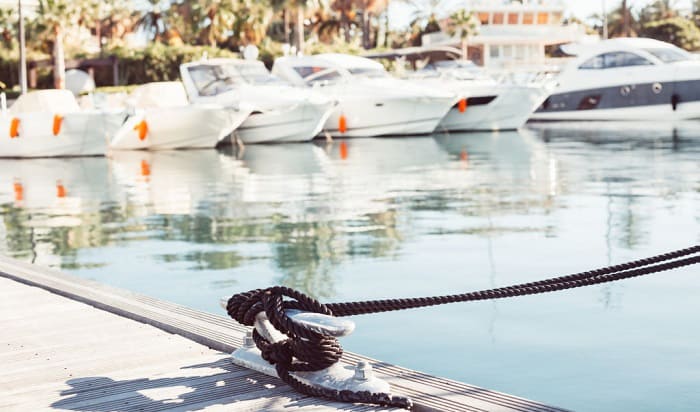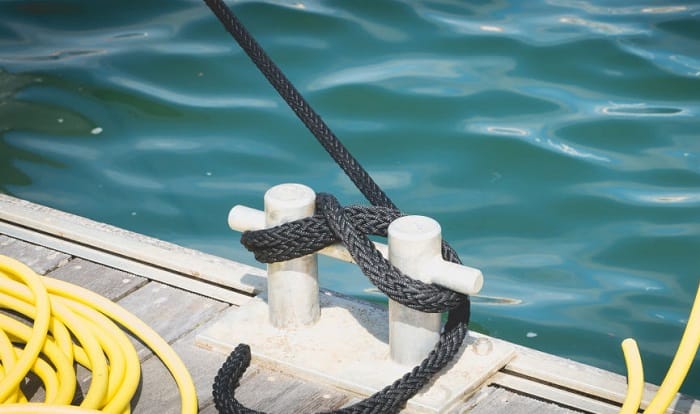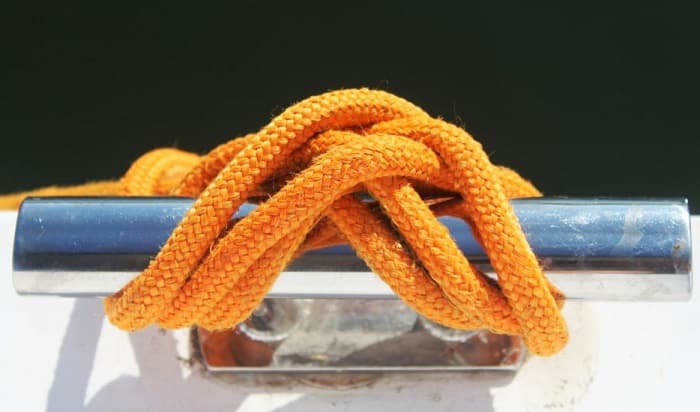Have you ever seen someone’s craft drifting away from its position at the dock? If you have experienced this, you might wonder how you can prevent this incident from occurring to you! It’s critical to know how to tie up your boat to avoid that from happening.
In this article, I will show you useful guidelines on how to tie a boat to a cleat while parking your vessel at any kind of dock and other tips about knot-tying techniques that can be applied in real situations.
To sum up, there are simple steps that you can take to tie your boat to any dock cleat:
- Plan your approach
- Tossing a line for another person
- Secure lines from the boat cleat to the dock’s
- Attach a line from the boat stern’s side to the dock cleat
There are also tricks to practice cleat hitch knots, which help to make sure your boat will not drift off or be damaged when you are absent. Therefore, stay tuned!
Table of Contents
- Tying a Boat to a Dock
- Tying a Boat to a Dock Cleat
- 1. Plan your approach – calculate the wind direction and tide changes
- 2. Always start by tossing a spring line to someone on the dock.
- 3. Secure a line from the bow cleat to a dock cleat forward of the boat
- 4. Attach a line from the stern cleat on the side of the boat; away from the dock, to a dock cleat behind the boat
- Tying a Cleat Hitch Knot
- Conclusion
Tying a Boat to a Dock
There are many elements that need to be accounted for before you decide to tie a boat to a dock cleat, such as tide changes and types of docks. It is necessary to guarantee that these uncontrollable factors will not cause any harm to your craft when you are away.
1. Calculating tide changes
You should constantly calculate tidal transitions while tying up your boat for a long period of time. Otherwise, whether you have a huge boat or a normal one, numerous accidents may occur. Having a sunken boat may be the worst-case scenario!
This can happen in many ways. If the boat gets stuck on the dock and fills up with water, it will roll over. However, how you account for tide changes also depends on the size of your boat.
If you have a big boat, your stern and bow cleats are probably higher than the dock. If you tie up your boat tightly during high tide, the ropes will have some slack at low tide and lead your craft to smacking against other vessels nearby.
Meanwhile, tying your vessel at low tide can cause tension in the line, make it snap, and let the boat slip away. The opposite situation happens with smaller boats having cleats lower than the dock. Hence, calculating tide changes is the key to avoid all these incidents.
2. Different types of docks
The type of dock where you park your boat will also decide the way you tie it. For instance, floating docks and slips are the most common and convenient since you can safely hook your boat to them without worry, while fixed docks require more complex approaches.
Nevertheless, there are tricks that help you handle any docks in case you cannot find a suitable one for your boat. When tying up your craft, remember to use long lines.
When you utilize longer lines, the elevation shifts caused by tides exert less stress. The longer your line is, the less strain you will experience. It’s just basic geometry!
Tying a Boat to a Dock Cleat
First, you need to understand what cleats are. Cleats are T-shaped metal pieces strategically placed around the sides and edge of a boat to make it easier to tie your craft up. Although most cleats are made from metal, there are other materials like wood or steel.
If your boat does not have cleats, it is easy to install them. Make sure there are at least three cleats on either the starboard side of your vessel or the port side. This allows you to tie up your boat on any side of the dock. Now, have a look at each step:
1. Plan your approach – calculate the wind direction and tide changes
To ensure that you can tie your boat smoothly, you need to consider currents and the wind direction carefully, as these elements may affect the process of parking your boat. I recommend not tying your vessel when the wind is strong or the tide is either too high or low.
2. Always start by tossing a spring line to someone on the dock.
This action is certainly helpful, especially when you have to park your boat under bad weather conditions. The person on the dock holding the line will help you to adjust the direction of the vessel. It makes it easier to tie your craft and avoid damaging other boats nearby.
3. Secure a line from the bow cleat to a dock cleat forward of the boat
To keep your boat safe and secure, you should tie a spring line to the dock because it is generally a smart idea. You’ll need to connect two spring lines: one from the front dock cleat and one from the back dock cleat.
4. Attach a line from the stern cleat on the side of the boat; away from the dock, to a dock cleat behind the boat
In this final step, connect the stern cleat on the boat’s side away from the dock to a dock cleat behind it with a rope. This will ensure the position of your vessel and make it less possible to drift away if there are strong winds or huge waves.
Tying a Cleat Hitch Knot
Perhaps, a Cleat hitch is the most popular cleat knot ever used by boaters when they need to tie a boat to a dock cleat, as it is quick to tie and easy to do. Thankfully, it’s a simple knot to study as well. Follow these step-by-step instructions to tie a cleat hitch:
- Step 1: Take your line to the cleat, wrap the rope over the cleat’s base, then bring it over the top of the cleat.
- Step 2:Bring the rope back under the arm of the cleat opposite where you wrapped it the first time, then over the top of the cleat.
- Step 3: Wrap the rope for a second time under the first arm, then bring it back over the top of the cleat. Around the cleat, the rope should now resemble a figure eight.
- Step 4: Form an underhand loop with the rope’s loose end and slip it over the cleat’s arm. This secures the free end beneath the last wrap.
- Step 5: Pull the loose end tightly to secure it.
The cleat hitch knot is not the only knot used by sailors to tie their boats, as there are a variety of knots used in boating, such as the clove hitch, bowline knot, overhand knot, etc. You can use any of these knots to tie your boat, depending on the dock’s type and your vessel’s size.
Conclusion
Tying a boat to a dock cleat is an essential step that should not be overlooked by boaters to maintain the safety of their vessel. By following these instructions, you can easily tie up your craft tightly using the simple cleat hitch knot and not worry about it slipping away.
Did you enjoy the article on how to tie a boat to a cleat? Do you want to add anything else? Please let me know and leave a comment below.

I am passionate about water sports and technical fields, so combining both makes me interested in making contents about boat accessories. With my partner, we went on many trips and sports games together, which led us to think about how we can spread our joys and passions to many people.



